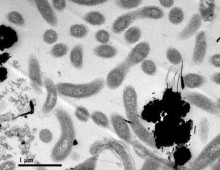Why Sequence Thermovibrio ammonificans?
Thermophilic and hyperthermophilic microorganisms are an important component of geothermal ecosystems, which include continental hot springs, solfataras, and both shallow and deep-sea hydrothermal vents. These organisms play a critical role in our understanding of several fundamental biological processes, such as microbial adaptations to elevated temperatures and prokaryotic evolution, and they represent a natural source for… [Read More]



